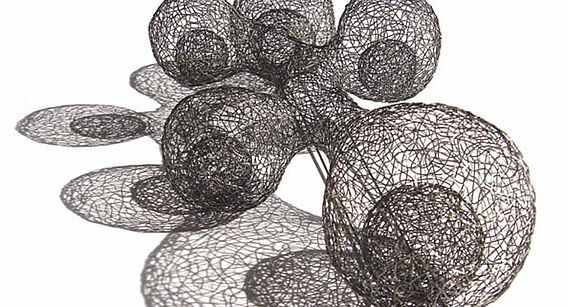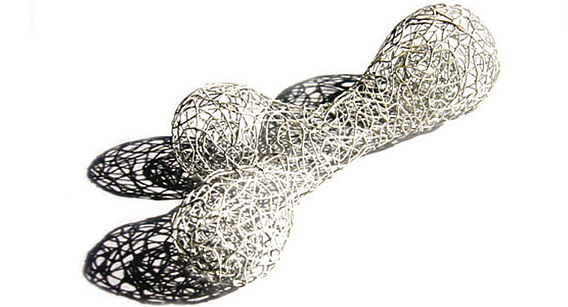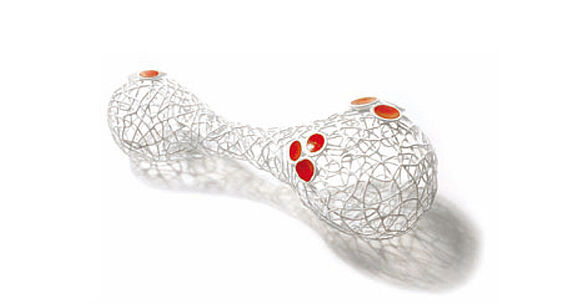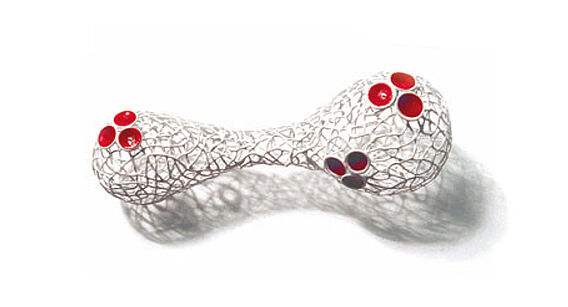Skelegon’s
This work, which revolves around the topic of “hollow bodies,” was created with the intention of portraying the hollow, that is, the part that does not exist physically, as a crucial expression of design. A wire net was placed over a body and the individual points of contact were welded together using laser technology. This technique makes it possible to work with very fine wires made of diverse metals. When a specific density has been reached, which should be identical throughout the wire net, the bodies show a greater level of stability than one would have thought. This allows the nets to be stitched without crushing the bodies inside. It is not until the carrier material is dissolved that the body reveals its lightness and transparency and fully unfolds its appeal.
Skelegon’s appeals to the eye because of the superimposition and compression of the net’s lines and their interaction from inside to outside. The net’s language of form is reminiscent of naturally grown buds, and its appearance is enhanced by the interplay of the elements moving freely in the interior. The flexible wire spheres in the interior tempt the wearer to play with them, and not only because the spheres make noise when they move. The additional appeal of the ring-like objects is that their movements can be felt in the palm of the hand.
Thanks to the variability of the carrier material, which allows the creation of a broad spectrum of forms, Skelegon’s can be manufactured both individually and serially. The name originates from a 3D graphic – it is the term used for displaying the skeletal structures of bodies.



